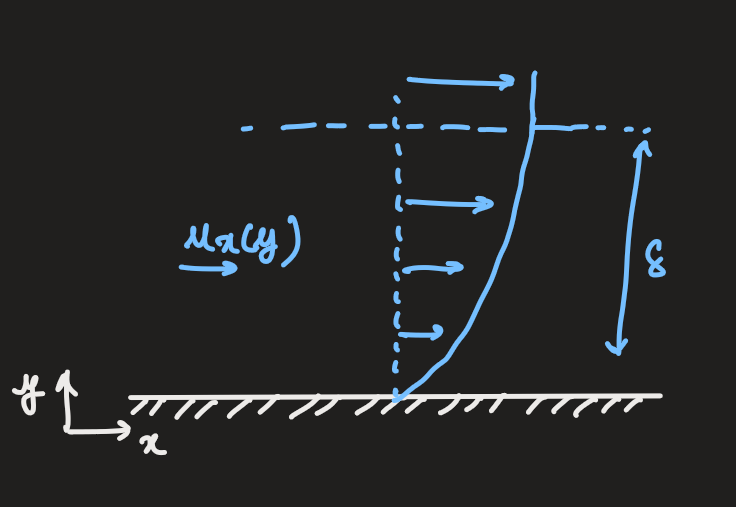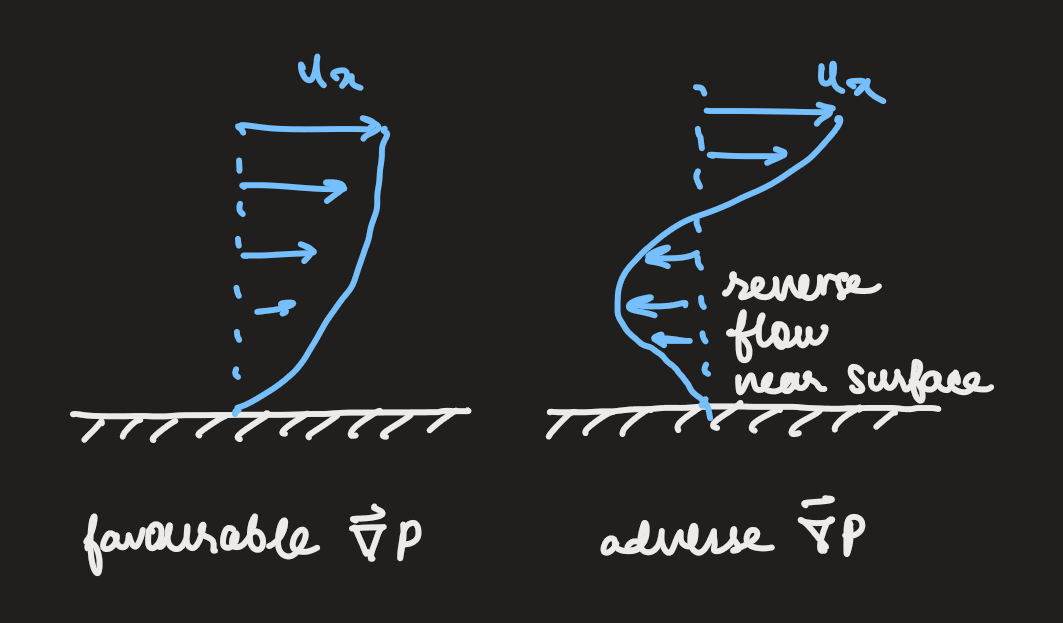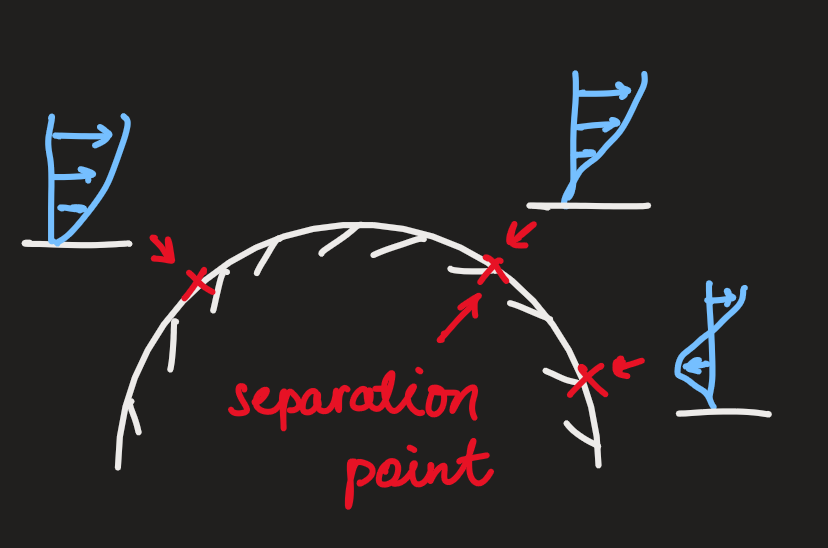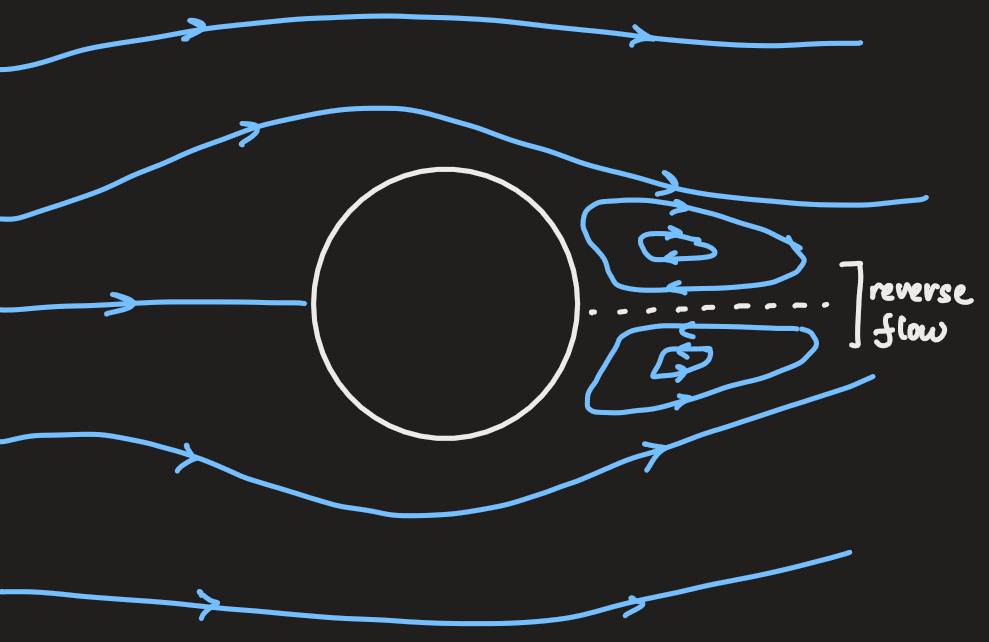PX285 - L7 - boundary layers
- when reynold's number,
, is large, the boundary layers are thin:
-
typically,
, and the boundary layers are thin compared to the object size -
considering the flow around a cylinder, where the flow outside the boundary layer can be taken to be potential

- the pressure on the surface:
- in fluids:
- in the upstream region, the pressure gradient accelerates the flow, ie. favourable pressure gradient
- in the downstream region, the pressure gradient decelerates the flow, ie. adverse pressure gradient

- considering the flow near the surface, ie. in the boundary layer, using the navier stoke equation:
- let the density be constant
- using the symmetry of the model:
- within the boundary layer:
is small, so the viscous term inertial term
since there is no acceleration in
- integrating twice:
- the boundary conditions:
- using the second condition:
-
this works only for
, therefore, and -
if
(flow from left to right) -
if
and sufficiently large: (flow from right to left, only in the boundary layer)

- the location along the plate where the flow reverses, ie.
- this is called the 'separation point'

-
this splitting of the flow due to the flow reversal effect affects the flow outside the boundary layer
-
this is called boundary separation
-
a similar example:

- incorporating this for the flow around the cylinder:
